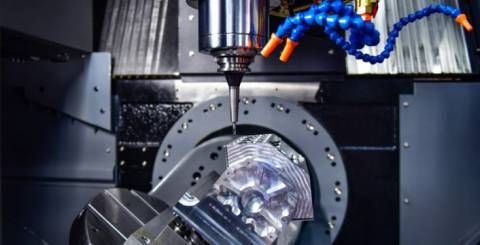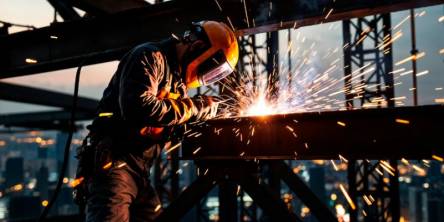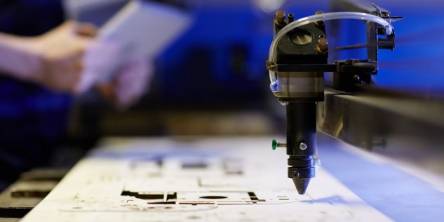Different Types of Modern Metalworking Machinery

The metal industry implies a diverse range of processes, skills and tools to manufacture parts, objects and even large scale structures. With the emergence of modern metalworking tools, a product receives a high level of uniformity and specificity.
The modern metalworking tools are conventionally powered by electricity. Additional automation of the machining process can be achieved by introducing the CNC machine based on computer programming. The modern metalworking machinery can manufacture several products with the given parameters and requirements.
Now you can get access to the affordable range of used metalworking machinery for sale. Let’s dive into new machine tools available in the market with the advancement of technology.
Modern Metalworking Machinery used in Manufacturing
Lathe Machine
A lathe machine comprises a rotating workpiece on which the workable object is placed. It allows achieving a symmetrical and definite shaping of the object. The rotation of the product performs different operations like knurl, cut, drill, or otherwise alter the metal.
A uniform effect is achieved throughout the entire circumference of the object with the friction of rotation. Lathes machines vary in shapes and sizes and are used in making items like jewellery to watches. It is used in an array of products, that are ferrous and non-ferrous metals, along with other materials like wood and plastic.
Drilling Machine
The most prevalent type of metalworking machinery that we see around us is the drilling machine. However, the drilling machine used in manufacturing differs slightly from the traditional hand drill machinery. It mainly consists of a fixed drill that is bolted or mounted to stand on a benchpress.
The best part of using a drill press is that it requires less exertion to drill and is comparatively more stable. Repeated and consistent drilling is achieved through fixing and maintaining the angle of drill spindle.
Milling Machine
The milling machines are similar to the drilling machine that incorporates a stabilised rotating cutter. It is used to remove the unwanted metal piece by enabling more versatility through performing sideways cuts.
In recent day milling machines, it supports a mobile cutter, while conventional models were identified with a moving table and stationary cutter to produce the desired effect. All these milling machines are available in vertical and horizontal configurations. It typically performs the peripheral milling and face milling.
Hobbing Machine
The hobbing machines are typically used in the creation of splines and gears. It incorporates a rotating cutter that enables side by side movement of both the cutter and the material being machined. One of its most common applications is the production of spur gears that make use of this unique cutting tool.
Its rare competence makes it suitable for 3D machining applications using the uniform tooth profiles. Equipped with CNC, it can make the metalworking machinery more efficient. In the industrial equipment auctions, one can avail the tools at a reasonable price point.
Grinding Machine
The grinding machine features an abrasive wheel that is made to rotate at a very high speed. This helps to create faint cuts or fine finishes on the object. It mainly depends on the type of grinder, where the product or wheel is allowed to move from side to side to get the required finish.
The finish achieved on the surface is through removing a small quantity of material which provides a smooth finishing touch. There are different kinds of grinder machines such as bench grinders, belt grinders, surface grinders, cylindrical grinders, and jig grinders.
Planner Machine
A planner machine is a sizable shaping machine that moves the object compared to moving its equipment or cutting mechanism. This makes the planner perfect for giving shape to the long or flat surfaces. It works in a linear motion, and often the result is similar to that of a milling machine.
In case there are massive metal surfaces that need squaring off, planner machines are beneficial in providing the necessary effect. These are mostly larger compared to the milling machines.
Broaching Machine
Broaching machine is equipped with a toothing tool the remove excess material from the workpiece metal. It has tall chisel points or teeth that apply the scraping motion and linear shearing on a metal surface. In a former punched metal surface, it produces non circular shapes out of holes.
There are two types of broaching processes, the linear and rotary that is implied on a metal. It is also used to cut keyways and splines on gears and pulleys. These machines are utilised in conjunction with a lathe to give vertical and horizontal cutting motion.
Bottom Line
These are some of the most common metalworking machinery that have found application in metal shaping and cutting processes. Each of these machines has been designed to obtain a specific effect in a given metal product.
Overall, these machine tools have been useful in getting the work done much more comfortably than conventional tools.
Similar Articles
When you see a steel ship in the harbor, the first impression is usually sheer scale.
Explore CNC turning—its components, process, benefits, applications, and future trends shaping modern precision manufacturing in various industries.
In the competitive industry of car manufacturing, attaining exceptional performance along with an innovative design needs the incorporation of modern manufacturing technologies
Facing delays, quality issues, or supply chain problems in hardware manufacturing? Learn the top 7 challenges—and practical fixes—to streamline production.
In the rapidly advancing landscape of high-tech manufacturing, electronics, and materials science, diamonds are no longer just gemstones they’re high-performance materials redefining what’s possible in technology.
A business in the manufacturing industry today has to ensure that it chooses the precision-engineered components suppliers keenly since the competition is very stiff
Selective Laser Sintering, or SLS, has established itself as one of the most reliable and widely used 3D printing technologies. This method is valued for its ability to produce complex, durable, and high-quality parts without the constraints of traditional manufacturing.
In the retail and display industry, the visual appeal of products is paramount. Customers are constantly drawn to displays that are not only eye-catching but also provide an immersive experience.
As previously established, CO2 laser technology operates by shining a high-power infrared beam on a mixture of gas that contains carbon dioxide, nitrogen, and helium. This technology is well known for the fact that it is able to engrave onto a variety of materials such as wood, glass, plastic, leather, and even some metals with high precision and without contact.









